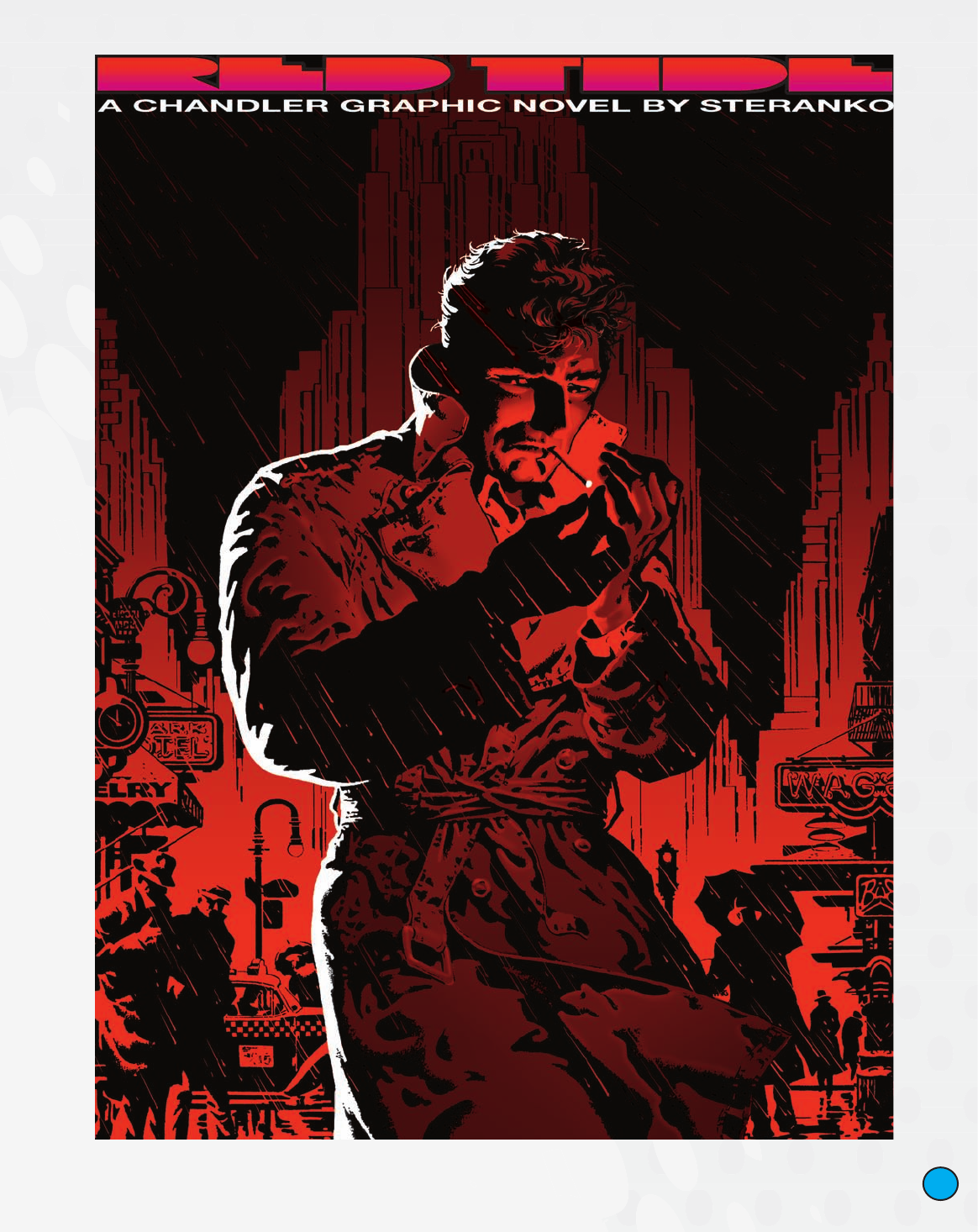
Job:05-19413 Title:Creating Comics
#175 P DTP:204 Page:140
(RAY)
120-176_19413.indd 140 5/26/10 8:59:52 AM
(Text)
Creative Process
In 1974 the Marvel Age of Comics had refocused cultural
spotlights on the four-color medium, which was appropriately
identified as an authentic American art form, existing somewhere
to the left of jazz. I’d made a limited, but somewhat resonant,
contribution to their chronology and decided to explore other
areas, some of which were natural extensions of the comic
book phenomenon.
One of those was the graphic novel, the roots of which extend
back to the turn of the century, when comics were in their em-
bryonic stages of development. Numerous variations—from Lynd
Ward’s wondrous, wordless, woodcut novels to the charming,
half-picture, half-text Big Little books—materialized, but no defin-
ing format emerged to dominate the field. Many recent attempts
were nothing more than fat comics: typical panel-and-balloon
arrangements (borrowed from comic strips), but with more pages
than the standard booklets.
To legitimately qualify as a graphic novel—I coined the term
visual novel for a subsequent marketing campaign—the require-
ments of a novel should be honored: a fictional prose narrative
of considerable length, intricate characters and plot, and chapter
breaks. Take notice there is no mention of balloons, captions,
sequential panels in color, black holding lines defining each
element depicted, or a booklet format—all of which define the
comic book. Quite simply, comic books are not graphic novels,
any more than big bicycles are automobiles. My solution to the
problem posited a functional, golden-sectioned relationship
between text and imagery in a 1:2 proportion on each page, with
a length exceeding 100 pages. The result seemed to satisfy both
terms: graphic and novel. It was titled Red Tide, a hard-boiled
crime thriller in the tradition of the films The Maltese Falcon and
Chinatown. Long out of print (both newsstand and bookstore
editions were published), a revised, uncensored, and heavily
expanded edition will soon be offered by Dark Horse. This is the
new cover.
Title: Cover of Red Tide, Tempest on Tenth Avenue
Client: Dark Horse Comics, 2007
Media: Pencil on paper, Photoshop
© 2007 Jim Steranko
140
J
im Steranko is a visionary engaging a multitude of
mediums, including films, graphic novels, inter-
active games, comic books, animated series, and
electronic formats.
His History of Comics volumes have sold more than
100,000 copies each. As an escape artist, his death-
defying performances inspired the character Mister
Miracle. His mastery of visual storytelling made a friend
of Federico Fellini and led to major cinematic collabora-
tions with Steven Spielberg, George Lucas, and Francis
Ford Coppola.
As writer-illustrator of Marvel’s Nick Fury, Captain Amer-
ica, Hulk, and X-Men (for which he created the classic title
logo), he created hundreds of graphic innovations that
changed the direction of the form. His paintings, ranging
from Luke Skywalker to The Shadow, have appeared as
book covers, movie posters, record albums, and maga-
zine illustrations. He helmed the entertainment magazine
Prevue for its impressive twenty-five-year run.
Steranko has exhibited his work at more than 250
international exhibitions, including the Louvre in Paris; was
inducted into the Eisner Hall of Fame; and was given the
prestigious Julie Award for his Lifetime Contribution to the
Fantastic Arts.
Jim Steranko
Job:05-19413 Title:Creating Comics
#175 P DTP:204 Page:140
(RAY)
120-176_19413.indd 140 5/26/10 8:56:43 AM

Job:05-19413 Title:Creating Comics
#175 P DTP:204 Page:141
(RAY)
120-176_19413.indd 141 5/26/10 8:59:56 AM
(Text)
141
Jim Steranko
Jim Steranko
Job:05-19413 Title:Creating Comics
#175 P DTP:204 Page:141
(RAY)
120-176_19413.indd 141 5/26/10 8:56:43 AM
Get Creating Comics! now with the O’Reilly learning platform.
O’Reilly members experience books, live events, courses curated by job role, and more from O’Reilly and nearly 200 top publishers.

